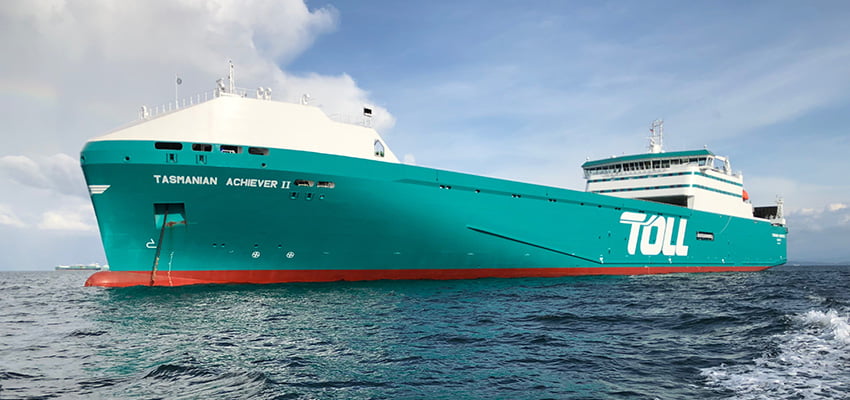INNOVATIONS in safety and environmental management are key to business operations on Bass Strait, executive general manager of Toll Tasmania/Toll Shipping Steven Borg believes.
The company has talked up a $360m investment program including two new ships, which entered service in March this year, upgrades to terminals in Burnie and Melbourne, new technology to boost the terminal efficiency, redevelopment and expansion of key depots and a fleet upgrade and expansion program.
Mr Borg talked of a 20-year-horizon.
“Tasmania is seeing benefits now from the work we are undertaking to ensure that we are able to serve our customers now and continue to meet their needs into the future,” he said.
Toll is one of the shipping businesses that links hundreds of Tasmanian businesses with access to mainland Australia and beyond. It also plays an important role in bringing consumer goods from around Australia across the Bass Strait.
Toll’s two new ships, Tasmanian Achiever II and Victorian Reliance II have 700 TEU capacity, a 40% increase from Toll’s former ships in service for Bass Strait trade.
“The new ships are performing to expectations,” Mr Borg says. “We have maintained schedule, the ships are crossing Bass Strait in quicker time and are handling poor weather a lot easier than the ships previously in service could do.”
“When the peak for shipping across Bass Strait hits later this year, we can offer a service that is free of the volume constraints that have impacted the industry in recent years.
“Importantly, this capacity for growth will be available for decades. The Australian economy, and in particular Tasmania, will be the real winner from the investments with greater certainty around the timely transport of goods, providing opportunity for producers and manufacturers to increase output.”
In March 2019 Toll introduced three A Double trucks to its fleet at Launceston.
“This is a first for Tasmania and brings huge benefits to Toll, its customers and the community,” Mr Borg says.
“The trucks are cleaner, safer and have less impact on infrastructure than smaller vehicles.”
A Doubles have two 40 foot trailers. They can carry four containers, compared with three containers carried by B Doubles, as well as more weight. This results in an uplift in the volume of cargo moving between Launceston and the Burnie shipping terminal, with fewer trips and traffic on the road.
Toll estimates the three A Doubles running between Launceston and Burnie wharf will remove more than 550 truck movements from Tasmanian roads a year.
Toll also announced this year it will bring the first shore power connection to Tasmania as part of its terminal upgrades at Burnie. Tasmanian Achiever II and Victorian Reliance II were designed and built with capability to connect to shore power when the upgrades at both Burnie and Webb Dock terminals deliver the high voltage power required to connect to the grid.
According to Toll, in Burnie, the shore power connection will allow the ships to connect to Tasmania’s clean energy grid rather than rely on diesel generators while at port.
This has the potential to lower noise levels and reduce carbon emissions by 18 tonnes and fuel consumption by around six tonnes a day for each ship.
Tasmanian Achiever II and Victorian Reliance II are the largest ro-ro-off ships in Australian coastal shipping and are designed to meet the growth in volume moving across Bass Strait for the next two decades. They come with exhaust scrubbing systems aimed at meeting IMO requirements for reduced emissions.
Innovations in technology, crew safety and environmental management saw the design win the prestigious Shippax RoRo Technology award design award in March 2019.
For further analysis of the Tasmania market, please read the August print edition of Daily Cargo News.

